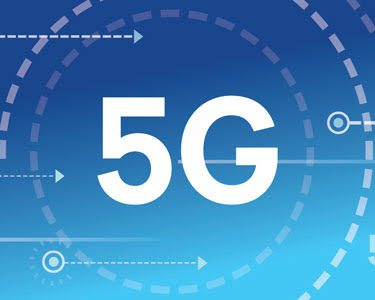Imagine driving a car communicating with city infrastructure. You come around a corner but the bits of information informing the car that a pedestrian is walking across the street have to wait for somebody’s video entertainment bits. The delay of a few milliseconds means you hit the pedestrian instead of stopping a few feet away from them. The tragedy is that with appropriate network management in place, the video watcher wouldn’t even have noticed any change in video quality when the network squeezed a few low-latency packets with automotive information ahead of some video frames. Yet, current Title II net neutrality rules forbid this form of network management.
The network and service capabilities that 5G will make possible will enable a vast number of new use cases for mobile and fixed wireless technologies. Unfortunately, the FCC’s current approach to ensuring an open internet is premised on Title II of the Communications Act. When applied to 5G network deployment and operation, the regulations will likely have the perverse effect of thwarting many of the most consumer-friendly 5G use cases. Title II-based regulations related to net neutrality will sacrifice the very 5G characteristics that hold the most promise for consumers, innovation, and economic growth across multiple sectors of the U.S. economy.
The millions of mobile applications already transforming the world are just the dawn of the next frontier in mobile broadband—humanity has barely begun exploiting the full potential of wireless technology. The Internet of Things, which will interconnect objects to increase their utility and efficiency, will account for tens of billions of new connections by next decade. IoT’s potential is limited only by imagination; use cases include self-driving cars with pre-crash sensing and mitigation, health biometric sensing and response, telemedicine, and proactive monitoring of critical physical infrastructure such as transmission lines. What many of these new applications have in common are stringent data communication requirements, such as high reliability or minimal delay. This is true even for use cases without particularly onerous bandwidth demands.
The federal government’s decision to use Title II as the basis for securing net neutrality rules happened at the same time that standards-based mobile technologies, such as LTE, were beginning to provide quality-of-service (QoS) management capabilities to network operators. Such QoS capabilities improve mobile traffic flows and can enhance user experiences. Now should be the time for operators to start using QoS parameters to serve different use cases and to experiment with various business models that could support them. However, with Title II as the baseline regulation, it’s unclear that QoS capabilities can be used as intended. A regulation that says a heart monitor transmission to a hospital emergency room cannot be treated as any more time sensitive than a cat video is absurd.
Current wireless networks assign equal priority to all third-party application traffic, regardless of the application type. An analogy is a freeway on which fast-moving cars and slow-moving trucks use all lanes equally. The goal of intelligent traffic prioritization is to maximize the quality of experience across the largest number of users and application types possible, allocating higher priority for those applications that need it while not adversely affecting those that do not. As ITIF states in a report, “Traffic differentiation simply is not a zero-sum game.” [[http://www2.itif.org/2015-alternative-title-ii.pdf]] Because applications have varying quality requirements, selective application of QoS results in higher average quality of experience across the subscriber base.
Absent network tools to manage around congestion, no user can completely depend on the network for a critical operation. This was an acceptable solution in years past, but consider the applications being developed for 5G: A medical device that has detected a possibly life-threatening event and is trying to send that data to a server for immediate evaluation could fail. A doctor performing surgery using telemedicine has his video freeze at a critical step. A stock trade could be executed moments too late. A 5G network environment can ensure these critical connections are protected from congestion effects—but only if QoS and other tools being built into the 5G standards are allowed to work.
5G needs QoS management, not only for traffic prioritization to support mission-critical applications, but also to enable a fundamental capability in its architecture: network slicing. Network slicing, implemented through virtualization, will allow an operator to provide different services with different performance characteristics to address specific use cases. Each network slice operates as an independent, virtualized version of the network. For an application, the network slice is the only network it sees. The other slices, to which the customer is not subscribed, are invisible and inaccessible. The advantage of this architecture is that the operator can create slices that are fine-tuned for specific use cases. One slice could target autonomous vehicles, another enhanced mobile broadband, another low-throughput IoT sensors, and so on. Different slices will have different QoS requirements, inherently invoking traffic management within each slice.
Developers and operators have a financial stake in enabling a diverse range of services, and empowering them to optimize networks to meet competing needs will result in the highest possible quality of experience for the largest number of users. The business case for massive 5G investment can only be made by being able to support all potential applications. Current simplistic views of network neutrality are blind to the fact that different types of applications have different network requirements.
The U.S. wireless industry is at a critical juncture. The United States has assumed global leadership in 4G and enjoys deep LTE penetration, leading smartphone platforms, and a vibrant application ecosystem. But globally, countries and companies are investing in and concentrating on what will come next with 5G. Constraining 5G with rules that unnecessarily undermine its potential is economic folly and anti-consumer.
For a full analysis of this topic, see: http://www.rysavy.com/Articles/2017-04-How-Title-II-Net-Neutrality-Undermines-5G.pdf
Peter Rysavy is president of Rysavy Research, a consulting firm that has specialized in wireless technology for more than 20 years. More at http://www.rysavy.com.

